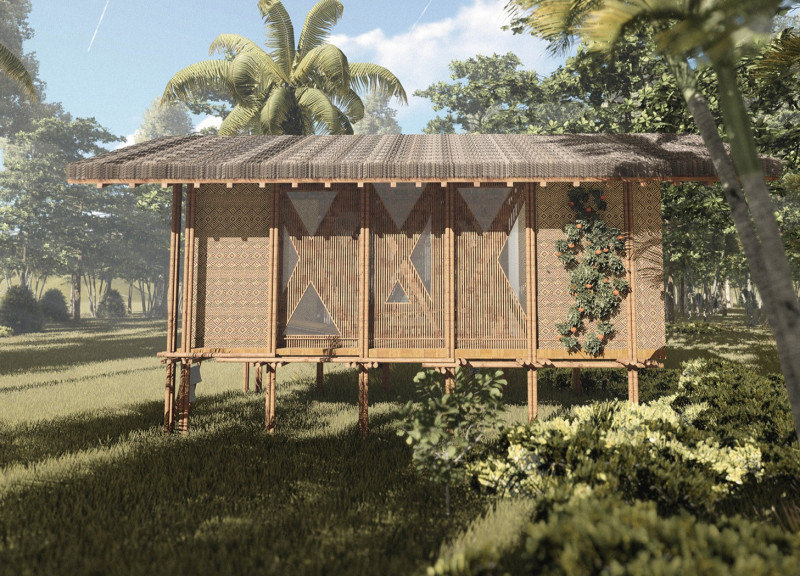5 key facts about this project
KUBO is a foldable and moveable dwelling located in the Philippines. It draws from the cultural heritage of the "Bahay Kubo," a traditional Filipino house, while adapting to modern living needs. The design aims to tackle the challenges posed by the region's susceptibility to natural disasters. By focusing on flexibility, community, and resilience, it offers a thoughtful solution for modern housing.
Design Concept
The design centers on adaptability and functionality. KUBO can expand from a small 2.5-meter by 2.5-meter footprint to a larger 2.5-meter by 8-meter layout. This ability to adjust makes it suitable for different family sizes and arrangements. The design incorporates the idea of "Bayanihan," where neighbors help each other move homes, reinforcing community ties. The elevated structure helps mitigate flood risks, while the open layout encourages natural airflow, vital for comfort in a tropical climate.
Materiality
A sustainable approach to materials characterizes KUBO. It uses bamboo culms, manufactured bamboo or lumber, sawali, and thatch. Bamboo serves as a primary building component due to its strength, fast growth, and flexibility, making it suitable for areas prone to earthquakes. Sawali walls and thatch roofing ground the project in local building traditions. These materials are not only environmentally friendly but also culturally relevant, connecting the new design with its roots.
Interior Configuration
The interior is designed for efficient and comfortable living. It includes essential spaces for sleeping, cooking, and sanitation. The use of foldable furniture enhances usability, allowing adjustments based on daily activities. This focus on flexibility makes KUBO practical for various situations, ensuring that the living space can easily change throughout the day.
Structural Details
Key structural aspects prioritize resilience against environmental threats. The design features a gable roof to direct rainwater away from the living area. Elevating the structure also improves airflow, which is necessary in humid tropical conditions. The architecture combines traditional elements with modern necessities, creating a living space that feels both functional and connected to its cultural heritage.






















































